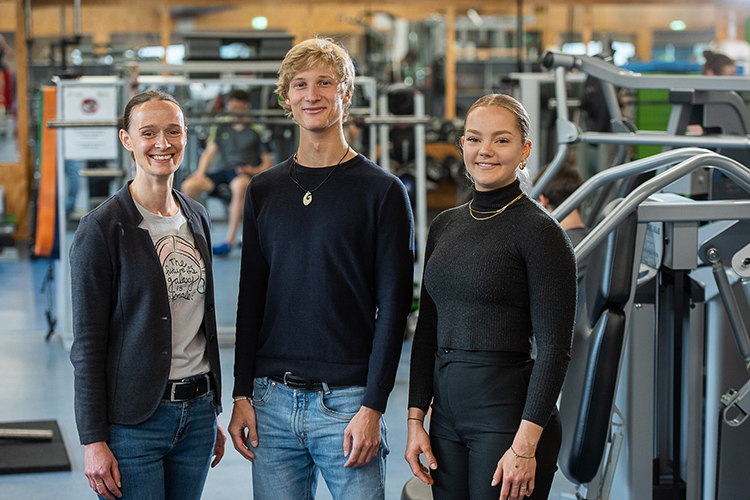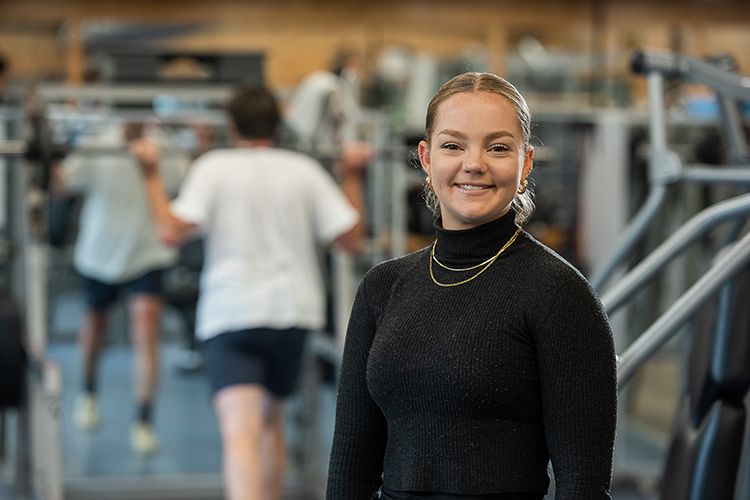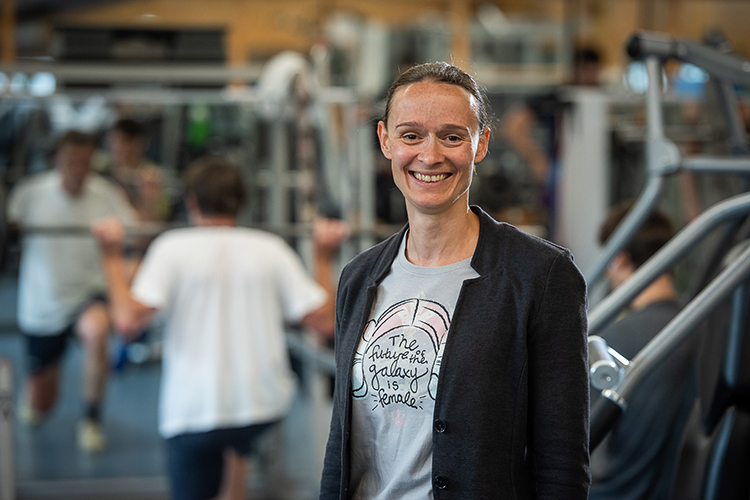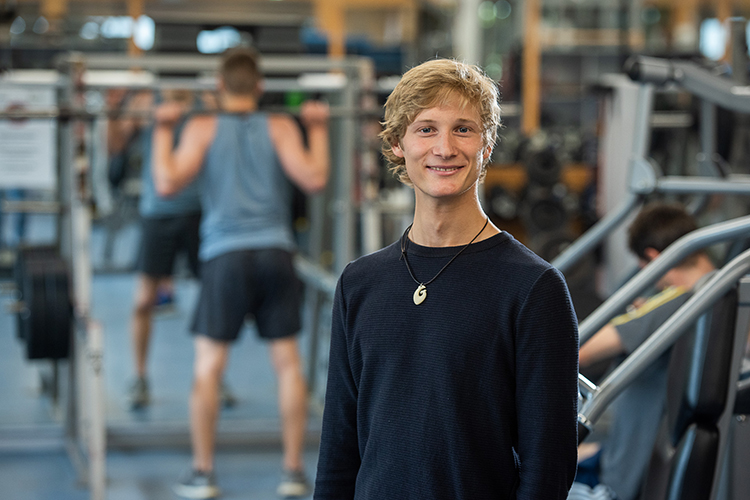Gender Differences in Sport – Sport gÄndern
Freiburg, 24/07/2024
At the Department of Sport and Sport Science students are investigating the role played by gender in various areas of sport

In the 2023/24 winter semester the University of Freiburg will be holding a seminar on the role of sport and gender in preventing and providing therapy for injuries, and athletic performance. The seminar is being organised and presented by Professor Jana Strahler, Professor of Sports Psychology. In conversation with Verena Krall, Strahler and her students Johanna Mertesdorf and Julian Lörch explain what is known about gender differences in sport and where there is still a need for research.
How did the idea come about to offer a seminar on sport and gender?
Jana Strahler: I was surprised that gender differences barely arise in sports studies. The subject is touched on in some fields, for instance when sports education is looking at gender stereotypes or differences in training. But until now the department hasn’t had any courses that dealt with gender issues in sport from various perspectives. I wanted to fill this gap.
Why is it important to deal with gender differences?
Johanna Mertesdorf: The gender data gap is still sizeable in many areas, in other words, there is often little or no data on where there are differences between women and men. As a result, many areas of life are optimised for men, including outside sport: the size of mobile phones, the temperature of the water in the pool, not to forget the form of crash-test dummies. Often there are disadvantages for women, because their specific needs are not taken into account.
Jana Strahler: A common approach to responding to gender differences is “pinking and shrinking”: clothing and sports articles for women are pink and smaller. But that completely overlooks female needs.

“Due to the gender data gap there are disadvantages for women, because their specific needs are not taken into account.”
Johanna Mertesdorf
Student at the Department of Sport and Sport Science
What is already known about gender differences in sport?
Jana Strahler: As an example: the menstruation cycle influences the performance of female athletes. When their mental well-being is reduced before or during the period, their performance also deteriorates. In addition, the frequency of specific injuries differs depending on gender. Women, for example, tear their anterior cruciate ligament far more often than men. Recommendations for recreational sport also differ by gender. Strength training reduces diastolic blood pressure more effectively in women. For men however it increases arterial stiffness more. That means, men’s blood vessels lose flexibility through strength training, which can increase the risk of high blood pressure and cardiovascular diseases. But we still need to research much more into gender differences in many areas of sport. For example, how competitive sport can be made more equitable for trans and intersex people.
What changes should there be made for this to major sporting events such as the Olympics?
Julian Lörch: Changing such a massive system is naturally difficult. I’d think it would be great if attention were paid to emphasising the issue of gender differences. For instance, why does a female sprinter fall well short of her best time and fail to win? Could her menstrual cycle be playing a part?
Jana Strahler: In the 2024 Olympic Games there is gender parity among the athletes for the first time. However, this does not apply to their accompanying trainers, physiotherapists and sports physicians. At the same time, anonymous surveys show that female athletes are more likely to raise issues such as menstrual cycle-related problems with female trainers. Therefore, parity for people in these supporting roles could likewise have positive effects.

“A common approach to responding to gender differences is “pinking and shrinking”: clothing and sports articles for women are pink and smaller. But that completely overlooks female needs.”
Prof. Dr. Jana Strahler
Professor of Sports Psychology
The seminar has produced several podcast episodes. What was the motivation for this?
Jana Strahler: The idea was to develop student work that was closer to the experience of the students. There was also the goal of making knowledge from research available to the public.
Julian Lörch: When I’m doing my homework I always have the feeling that I’m writing for someone who already knows it all. So it was cool to create something with the podcasts that is explicitly designed for the public.
Johanna Mertesdorf: The subject of gender differences in sport is simply a very topical one, which is relevant to society. So it’s even more important to explain this and communicate facts to the public. It felt very meaningful.

“I’d think it would be great if during the Olympic Games attention were paid to emphasising the issue of gender differences.”